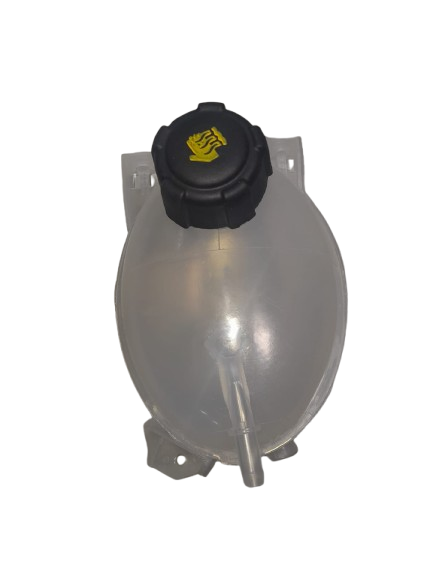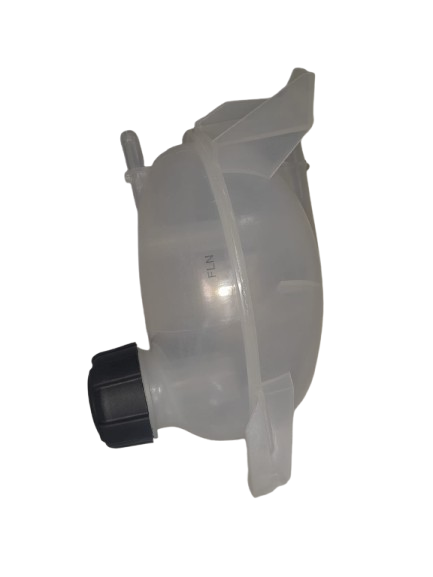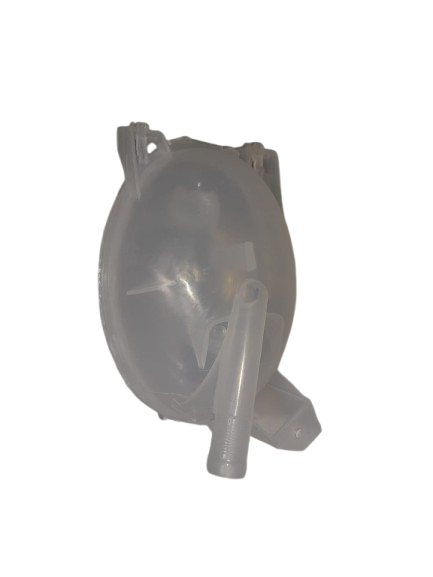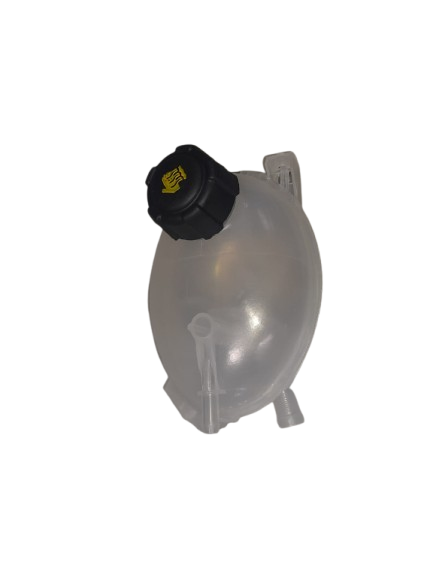



Overview
The coolant expansion tank, also known as the radiator overflow tank or coolant reservoir, is a critical component of the vehicle’s engine cooling system. It serves to hold excess coolant that expands when the engine heats up, and to return it to the system once the engine cools down. This ensures consistent coolant levels and prevents overheating.
In Renault vehicles such as the Clio IV 0.9T, Sandero, and Captur, this part plays a vital role in maintaining proper cooling system pressure and volume. It is typically made of transparent or semi-transparent heat-resistant plastic and includes “MIN” and “MAX” level indicators for easy monitoring.
Function and Importance
The expansion tank allows for:
- Safe storage of expanding coolant during engine operation.
- Return of coolant to the system when temperatures drop.
- Monitoring of coolant levels without opening the radiator.
- Prevention of air entering the system, which could lead to engine overheating.
In turbocharged engines like the 0.9 TCe, stable engine temperature is even more critical due to higher operating heat levels.
Compatibility
The expansion tank is designed to fit the following models:
- Renault Clio IV (2012–2019) — including 0.9T, 1.2T, and 1.6T engine variants.
- Renault Captur I (2013–2019) — 0.9 TCe and 1.2 TCe engines.
- Dacia/Renault Sandero II (2012 onward) — petrol and diesel variants.
OEM reference part numbers often include:
- 217104354R
- 217107259R
Always check your vehicle’s VIN or consult a parts supplier to confirm exact fitment.
Design and Materials
The tank is manufactured from high-quality plastic designed to withstand engine bay temperatures and pressure variations. Key design features:
- Heat-resistant plastic body.
- Clear visibility of coolant levels.
- One or more hose inlet/outlet connections.
- Integrated mounting points or brackets.
- Some variants may include the cap; others require it to be purchased separately.
Common Failure Symptoms
Signs that the expansion tank may need replacement include:
- Coolant leaks beneath the tank or engine bay.
- Cracks or discoloration on the plastic tank.
- Frequent coolant loss or low-level warnings.
- Bubbling or gurgling sounds from the tank due to air in the system.
- Overheating engine despite no visible leaks (may indicate internal cracks or air entry).
A failing tank can cause reduced coolant pressure, leading to engine overheating and potential long-term damage.
Replacement Tips
When replacing the tank:
- Ensure you get the correct part number (match OEM codes).
- Inspect and, if necessary, replace hoses and clamps.
- Always bleed the cooling system after installation to remove air pockets.
- Use only Renault-approved coolant, typically Type D (glaceol RX-type or equivalent).
- Fill only to the “MAX” line when cold — never overfill.
Ensure the new tank mounts securely to avoid vibrations that could cause premature failure.
Maintenance Advice
- Check coolant levels regularly, especially in older vehicles.
- Keep an eye out for any white or rusty residue on or around the tank.
- Avoid opening the system when hot — always let the engine cool.
- Replace the expansion tank cap if pressure issues persist (some use pressure-regulated caps).
Conclusion
The expansion tank is a small but essential component that protects your engine from overheating. Whether you drive a Renault Clio IV 900T, a Sandero, or a Captur, keeping your coolant expansion tank in good condition ensures efficient cooling and prolongs engine life.
Replacing a damaged or aging tank is an inexpensive preventative measure that can save thousands in potential engine repairs. With the right part and proper installation, your vehicle’s cooling system will continue running smoothly and reliably.
